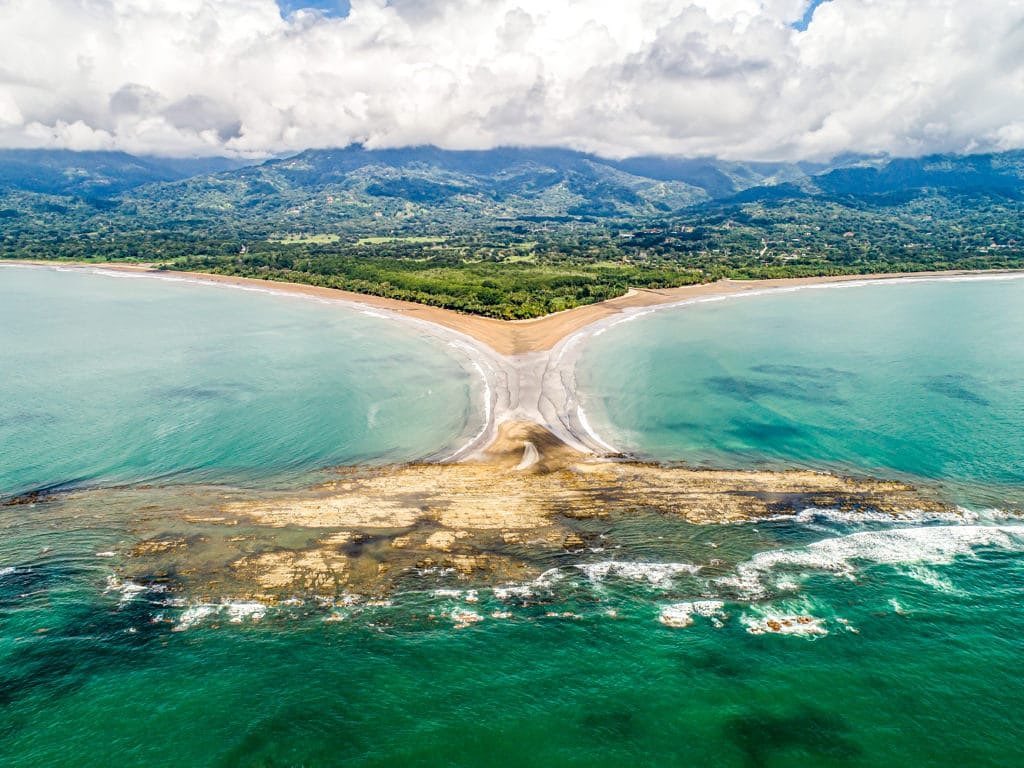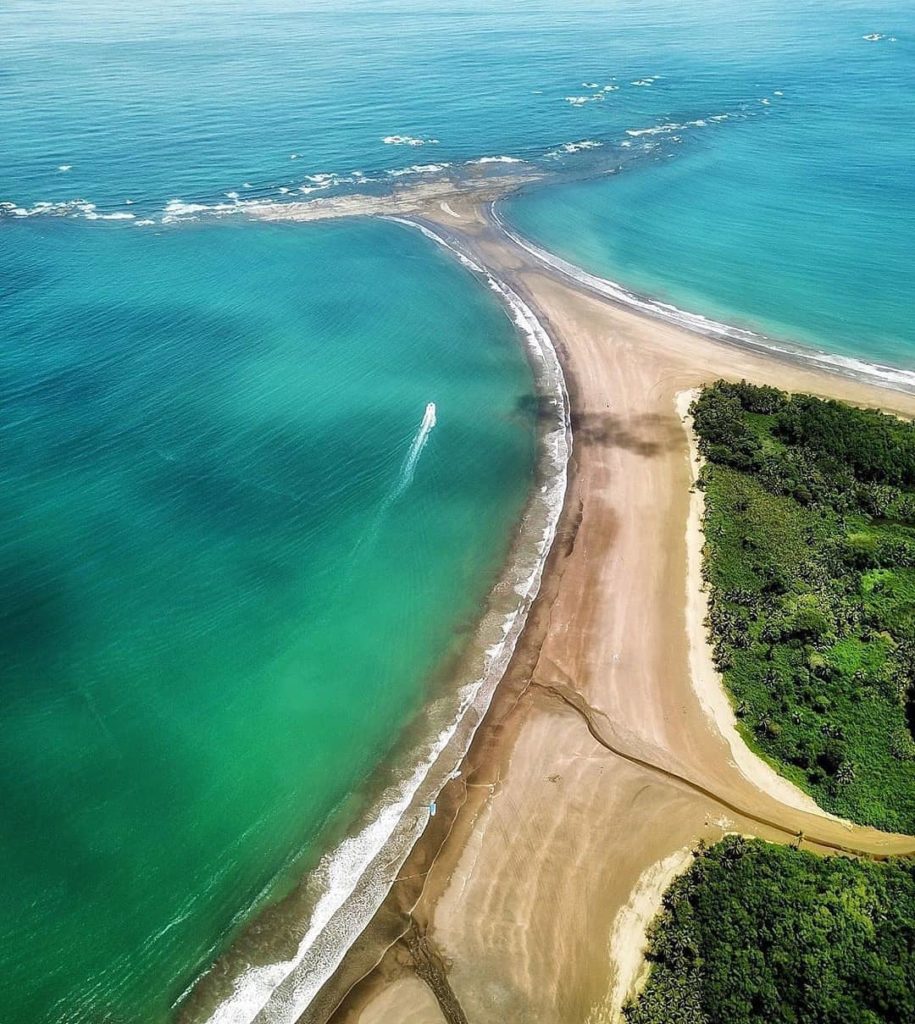Park Info
Every day from 7 a.m. to 4 p.m.
Whales and dolphins emerge from the water and offer a show that you can witness.
It is the favorite place of humpback whales and several types of dolphins, this park turns on and off in a natural scenery where these animals can be observed.
Humpback whales come every year (July to October) to carry out their reproductive cycle; they arrive at a park area where there is a rocky and sandy formation that resembles the tail of a whale. This curiosity is the main attraction of the place.


Inside the park you can visit the tómbolo (whale tail), go and enjoy the beaches or practice superficial and deep diving to see a huge range of marine life. You can also enjoy the calmed sea that bathes these shores or boating on nearby islands.
In addition to the humpback whale, they can be found in its waters species as the spotted dolphin, bottlenose dolphin, manta ray, hammerhead sharks, parrotfish, and mackerel.
“Take advantage of your visit and enjoy the attractions of the area, such as horseback riding, canyoning, and waterfalls,” said Gallardo.
The Marino Ballena National Park has 4 official access routes for the enjoyment of visitors, all are located by South Inter-American Highway: Uvita, Colonia, Ballena, and Piñuela.
Created: On June 9, 1992, the creation of the park was legitimized with Executive Order No. 21294-MIRENEM
Area: 5,160 marine hectares and 171 terrestrial hectares, with a coastline of 9,3 miles (15 km) long
Weather: Hot, rainy, and very humid
Dry season: From mid-December to mid-April, with sporadic rains.
Rainy season: from mid-April to mid-December.
The Marino Ballena National Park was established in 1989 but the first decree was repealed in 1990, and in 1992 it was legitimized with an approximate land area of 5331ha.
It was the first marine park in Costa Rica and Central America, the first protected area created exclusively for their marine resources. It has about 9.3 miles (15km) of beach and its land area is only the range of 164 public feet (50 public meters).
Attractions
La Cola de la Ballena (Whale Tail): It is a natural rocky and sandy formation caused by the sedimentation generated by tides. You can only visit it during the dry tide. The shape of the tail can only be seen from high parts or doing a flyby. It is also known as the Tómbolo and the passage of Moses.
Isla Ballena: Located about 1.24 miles (2 km) from the coast, it is a rock formation that houses some species of birds and iguanas. In its vicinity, there are coral reefs.
Tres Hermanas Islets: They are three rock formations where nesting birds are also given.
Beaches: In addition to Uvita, where the Tombolo is located, there are other beaches within the Protected Wilderness Area:
Bahía, Colonia, Ballena, Arco and Piñuelas.
Snorkeling: You can perform this activity during low tide near the tómbolo or whale tail, just mask and snorkel is permitted, diving fins are not allowed.
Whale watching: Humpback Whale watching in season (July to November) and resident dolphins throughout the year in the area.

Services
- Area for lunch.
- Camping area.
- Sanitation services.
- Showers, no drinking water.
- Parking (Ballena Sector).
Recommended
- Respect the rules of public use of the park and check the tide table published at the entrance.
- Respect the park visitation schedule.
- Beware of sea currents and do not bathe in the areas of identified risk.
- Take care of your belongings.
- Stay on the trails.
- Garbage is not part of the natural environment, take it out of the park.
- Do not forget your hat and sunscreen, also try to wear walking shoes for rocky areas.
- Please be cautious with the sea currents, watch out for high tides, especially near the mouths of rivers. Refer to the park entrance tide tables.
- Take care of your belongings and lock your car well, leaving nothing of value at sight.
- The National Park is not responsible for loss or damage of equipment or materials
- If possible use biodegradable soaps for showers and washing, and not pollute.
- If you have special medication, do not forget it.
- Contact Associations of local guides, local tourism operators, and local organizations that can support you to hire tour guides and tours.
Restrictions
It is important to note that in the Marino Ballena National Park the following are not allowed:
- Enter being drunk/intoxicated as well as the entrance and consumption of drugs and alcohol.
- Entering with pets or pets.
- Removing stones, plants, or other natural resources from the wilderness.
- Walking out of the trails or public use defined areas.
- Smoking (Law No. 9028).
- Throw garbage.
- Touching, feeding, and harassing animals.
- Entering with weapons
- Marketing activities within the park boundaries.
- The transit of any vehicle on the beach, under Article 127 and 130 of traffic law No. 7331, or boats that threaten the lives of bathers.
- Horseback riding.
- Campfires in the park, if you want to cook you should bring a non-ground level gas stove or grill.
- Playing Sound Equipment at High Volume.

Prices
- National and residents: ¢1.000.
- Foreign Non-residents: $6.
- Children under 11 years of age and elderly people do not pay.